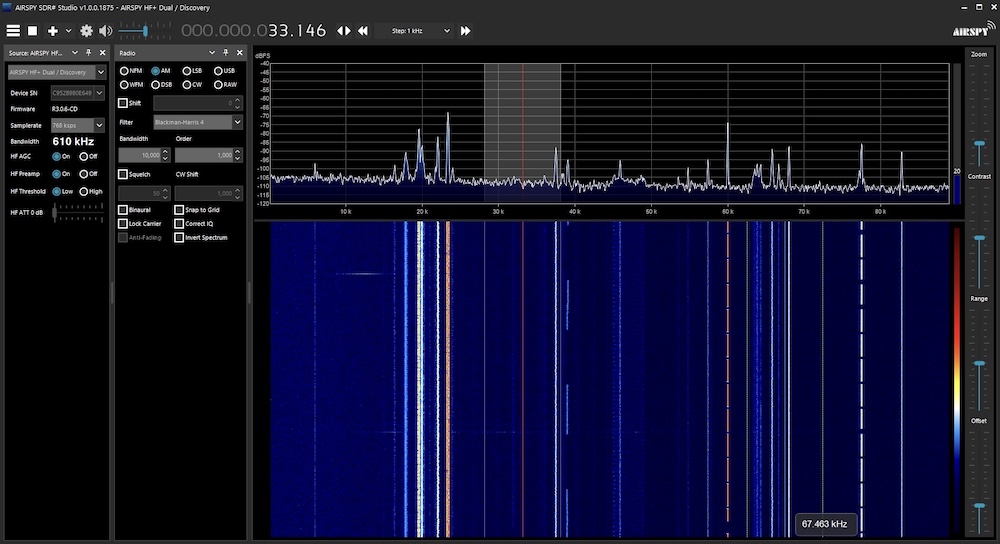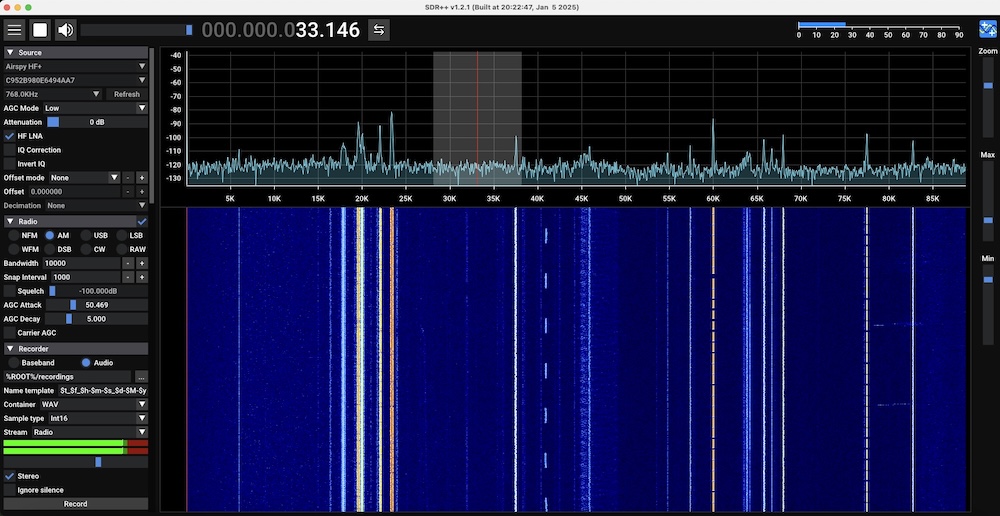Airspy and MacOS
Just recently I realised that amongst my kit I do not have a scanner other than the baby IC-R2. So I had a look to see what there is and they range from cheap but limited range ones that do not have a continuous coverage to expensive types that are just way over the top for my needs. My interest is limited to having something I can quickly switch on and listen to a few spot frequencies, including amateur radio ones and the local airport ATIS.
I also have a bunch of various SDRs but none met the 'quickly switch on' requirement. Time to fiddle then.
Other than the various Raspberry Pi systems the only always-on system I have is a Mac Mini. The other two desktops - Linux and Windows - only get turned on when I want to use the FT450D or TS2000X on digimodes or I need more screen real estate for something. So what can I do with the Mac?
I already had CubicSDR loaded and I downloaded the Mac version of gqrx. As I use SDR# on Windows and after reading some blog posts I found and downloaded sdrpp. I already have the Airspy HF+ Discovery connected to the Windows box and a RTL-SDR V3 dongle. At this time my thoughts expanded to consider if I use an SDR then I want one with a very good range - so, the Airspy. Anyway, I mixed and matched the software and SDRs to see what fits the best.
For CubicSDR and the RTL-SDR dongle I could not find a way to switch it to direct sampling mode so there was nothing below 24MHz. I probably missed a setting. This setup worked fine for VHF FM and airband. I could not get CubicSDR to see the Airspy.
For GQRX and the RTL-SDR dongle again I could not find a way to switch to direct sampling. With the Airspy all went well except it was rather difficult to control down at VLF. That's probably just me.
For SDRpp the RTL-SDR could be switched to direct sampling but at the end of the day it only works down to 500kHz. With the Airspy it is very like the Windows version which I find easy to use. I did note that when changing frequency a lot it can get confused - for example, I went from airband down to VLF and could not get to 60kHz time signal but it worked fine after restarting the software.
A like for like comparison between the Airspy and SDR# on Windows and SDRpp on the Mac showed very similar results, the differences being to do with she speed of the waterfall and there are numerous settings to explore yet. So the Airspy is now connected full time to the Mac and the YouLoop. The real acid test will be to see if it holds up during the next SAQ broadcast later this year but it looks like it will.

Above: Windows 10 + SDR#; below: MacOS for comparison. The frequency range is from 0 to just over 80kHz.

Ok so it isn't a scanner but it does what I need it to and a lot more besides.